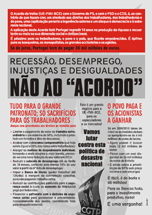Neeraj Chaudhary
With the mainstream media focusing on the country's leveling unemployment rate, improving retail sales, and nascent housing recovery, one might think that the US government has successfully navigated the economy through recession and growth has returned. But I will argue that a look under the proverbial hood reveals a very different picture. I believe the data shows that the US economy is badly damaged, and a modern-day depression has begun. In fact, just as World War I was originally called The Great War (and was retroactively renamed after World War II), Peter Schiff has said that one day the world will refer to the 1929-41 era as Great Depression I, and the current period as Great Depression II.
For starters, look at unemployment. During Great Depression I, unemployment broke 25%. If government statistics are taken at face value, the current unemployment rate is 9.9%, but a closer look reveals that the broadest measure of unemployment is currently at 20% - and rising. So, today's numbers are in the same ballpark as the '30s even though the federal government is using unprecedented measures to keep the economy afloat. Remember, in Great Depression I, FDR never ran a deficit nearly as large as President Obama's. Moreover, the Federal Reserve of the 1930s still had a gold standard with which to contend, while today's Fed has increased the monetary base with impunity. Yet even with all that intervention, unemployment figures still indicate that we have entered depression territory.
What is demoralizing to an unemployed person is not simply being let go, it is being unable to find a new job for an extended period of time. And this is where Great Depression II really rears its ugly head. According to the US federal government's own data, the median duration of unemployment is now over five months - and rising. This is the highest it's been since the BLS started compiling this statistic in 1965. As workers start to go this long without jobs, they eat into their savings. Eventually - and especially in a country with a savings rate as low as ours and debt as high as ours - they run out of cushion and hit the street. Formerly middle-class people have to make decisions never thought possible: do I eat in a shelter or go hungry in my home?
It's no surprise, then, that about 40 million people - or one out of every eight Americans - are receiving food stamps in Great Depression II. During the height of Great Depression I, the rate was just one out of thirty-five Americans. Even with the stimulus programs, Great Depression II is actually worse on this measure than Great Depression I - and the USDA estimates that the program could grow by another 50%. Who will pay for this growing program if everyone is out of work?
Despite tax credits that have created a rush of purchases this spring, housing is in just as bad shape. During Great Depression I, home prices dropped some 15% from their pre-depression peak (achieved in 1925). In Great Depression II, housing is down at least 30% from the pre-depression peak (achieved in 2005), with some markets down more than 50%.
So, many of the people expected to keep making mortgage payments as they eat tuna fish to stay alive will be paying double their home's resale value. This is a tremendous incentive to walk away, with disastrous consequences for the country's social fabric in these trying times. Empty homes breed crime and vandalism, encouraging more to flee in a negative feedback loop. Moreover, the many 'walkaways' may create a class of Americans with ruined credit - right when many employers have started checking credit scores before hiring.
Even more worrisome, the present drop in home prices is against a backdrop of price inflation. In Great Depression I, our grandparents may have lost value in their home, but everyday goods (milk, diapers, automobiles, etc.) got cheaper at the same time. That made their savings 'cushion' deeper when they needed it most. Today, as home equity (now our main store of savings) declines, prices for consumer goods are rising. It's a tight squeeze indeed.
From jobs to food to the roofs over our heads, the current period of economic turmoil is at least as bad as the First Great Depression, whether or not the financial media wishes to acknowledge it. The main difference is that unlike in the '30s, the US dollar is now the world's fiat reserve currency, so we are able to push our problems overseas for awhile. The plight of the rural Chinese is really our plight - we are living lavishly on the wealth they create. Were they to quit this dastardly arrangement, the full effects of Great Depression II would be felt in America.
By contrast, in Great Depression I, the US was on the gold standard like everyone else, which forced us to live within our means. This, in turn, made it easier to recognize that the economy was in decline and changes had to be made.
Unfortunately, because of the responses of the Administration and the Federal Reserve, which I believe to be deeply misguided, I remain concerned that Great Depression II could develop into something far more devastating than its predecessor, something that other countries in the world have experienced but was thought impossible in the United States: a hyperinflationary depression. As bad as the current downturn has been, inflation would make it immeasurably worse. It would require an honest accounting of the problems we face today to avert the disaster we see coming tomorrow.
http://www.informationclearinghouse.info/article25646.htm
À procura de textos e pretextos, e dos seus contextos.
08/06/2010
Subscrever:
Enviar feedback (Atom)



















Sem comentários:
Enviar um comentário